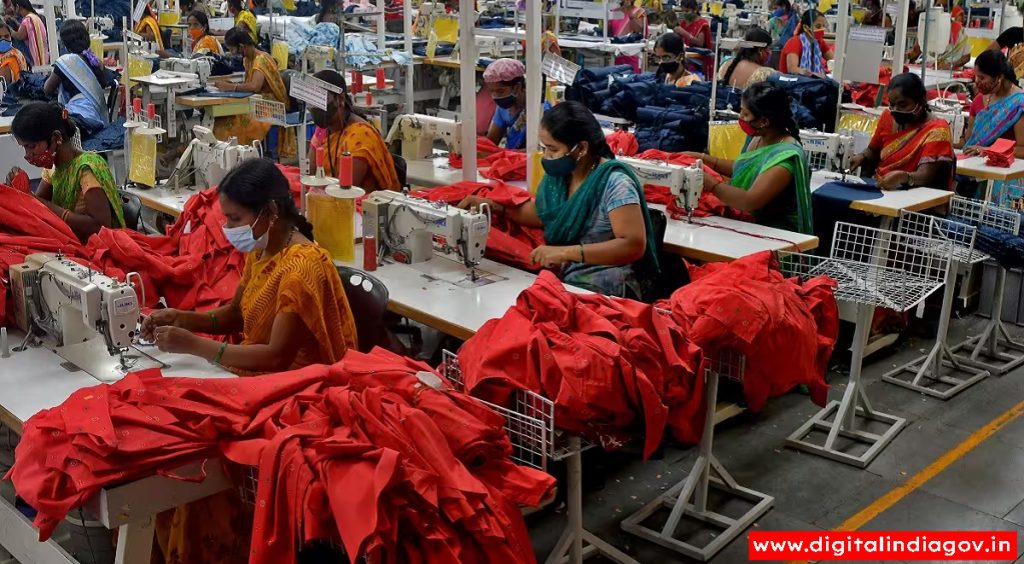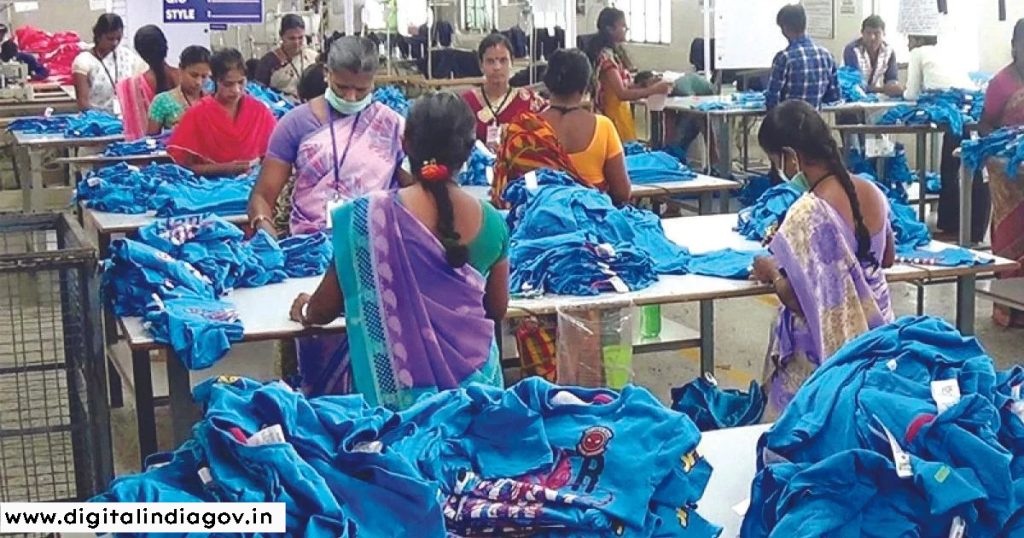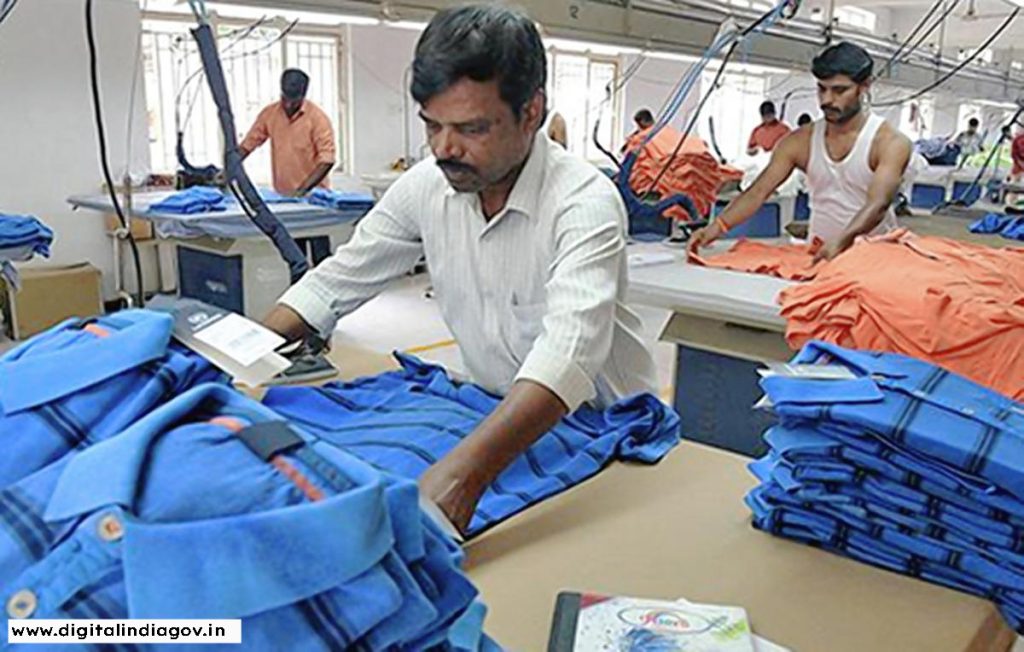Samarth Scheme:- The Ministry of Textiles’ premier skill development program, Samarth Scheme, is an extension of the integrated Skill Development Programme from the 12th Five Year Plan. Originally unveiled in 2017, the Scheme for Capital Building in the Textile Sector (SCBTS) is another name for it. The goal is to teach ten lakh unskilled workers and employ them in a variety of textile-related sectors, such as jute and handloom. Samarth aims to improve the skills of young people without jobs in India’s textile value chain.
Contents
What is the Samarth Scheme?
The Samarth Scheme is an effort by the Ministry of Textiles that aims to increase the capacity of the textile industry in India. Introduced in 2017, the SCBTS stands for the Programme for Capacity Building in the Textile Sector. The main goal of the Samarth initiative is to provide a steady supply of trained labor for India’s labor-intensive textile industry. The goal of the program is to upskill 10 lakh young people working in the organized sector of the whole textile value chain—spinning and weaving excluded. The Samarth plan, which has a financial investment of 13000 crores, includes cutting-edge features like online monitoring of the training process, CCTV recording of training programs, Aadhar-enabled biometric attendance, Training of Trainers (ToT), and dedicated call centers with hotline numbers.

Also Read:-UP Free Tablet Smartphone Yojana Tablet Yojana 2023, Digitize India, Digitize India Platform, Work From Home Jobs, Celebrity Phone Number
Objectives of the Samarth Scheme
The following is a list of the Samarth Scheme’s primary goals.
- Offering a skill program that is placement-driven and demand-driven while adhering to the National Skill Qualification Framework (NSQF).
- To help strengthen the textile industry’s initiative to create jobs.
- To improve juvenile training through trainer training.
- To decrease unemployment and reliance while encouraging youth to work for themselves.
- Traditional industries, including handloom, are encouraging skill-upgrading activities in addition to the training of new hires.
- To allow everyone to have access to a sustainable means of subsistence.
- To encourage and assist the textile industry’s efforts in creating jobs.
Major Features of the Samarth Scheme
- Master trainers will receive training from the government to hone their facilitation abilities.
- The use of an Aadhaar-enabled biometric attendance system will ensure the credibility of both the trainers and the beneficiaries.
- In order to keep major interruptions to the scheme’s operation at bay, CCTVs will be deployed at training sites.
- There will be a specialized call center set up with a hotline number.
- A management information system (MIS) that is mobile app-based will be used to monitor the training procedures.
- There will be online oversight of the training protocols.
- With a total budget of Rs. 1,300 crores, the central government has approved the program.
- Concessional credit for self-employment is available to Pradhan Mantri Mudra Yojana beneficiaries.
- Biometric attendance system with Aadhar enabled.
- Only qualified educators with Training of Trainers (ToT) certifications from SSCs or RAS may deliver instruction.
- The government will conduct arbitrary inspections of every training establishment.
- It is necessary to construct the courses in compliance with the National Skills Qualification Framework (NSFQ).
- A minimum attendance of 80% is required for assessment purposes.
- There will be a hotline number available to take comments.
Expected Outcomes of the Samarth Scheme
The Samarth Scheme’s primary anticipated results are:
- A higher standard of Indian textile output is expected as a result of the Samarth programme.
- The improved material quality would lead to a rise in the demand for Indian textiles abroad, which will boost exports.
- The aforementioned results will likely lead to the development of jobs in the textile industry.
Benefits of the Samarth Scheme
The following advantages of the Samarth Scheme are:
- skill development in textiles for the benefit of young people.
- The Indian government has inked Memorandums of Understanding with 18 States, providing training advantages to 4 lakh people, in an effort to empower individuals.
- 3.6 lakh recipients are to receive training in traditional and organized industries.
- Due to their unique treatment, the 150 aspirational districts and the socially backward sections will profit from the Samarth plan.
- Training completion on time and accurately is ensured by the robust strategy and monitoring mechanism of the Samarth plan.
- The Mudra Yojana’s concessional financial support would help India’s ecosystem for generating jobs and entrepreneurship.

Also Read:- Pradhan Mantri Suraksha Bima Yojana
A Brief Overview of the Indian Textile Sector
One can understand the current state of the textile and garment industries in India, which were among the first to grow, by considering the following points.
- The textile industry makes up about 2% of India’s GDP.
- In 2020–21, textile exports accounted for 11.4% of India’s total exports.
- India ranks among the leading producers of silk, jute, and cotton worldwide.
- The textile and apparel industries directly employ 45 million people, while another 100 million people work in associated industries.
- As of late, India has emerged as the second-largest global manufacturer of personal protective equipment (PPEs).
- India makes up 5% of the world market for clothing and textiles.
Other Schemes of the Textile Sector
Here is a summary of some of the most significant schemes for the textile industry.
- The Technology Upgradation Fund Scheme (TUFS) offers financial support to the textile industry in order to facilitate technological advancements.
- The Integrated Textile Cluster Development Scheme (ITCD) gives the states financial support to create textile clusters.
- The Scheme for Restructuring and Revival of Ill Textile Firms (SRRSU) provides financial support to the states to help with the restructuring and revival of ill textile firms.
- Under the Scheme for Development of Khadi and Village Industries (KVIC), financial support is provided to the KVIC with the aim of fostering the growth of the Khadi and village industries.
- The Textile Industry receives financial support for the advancement and marketing of technical textiles under the Scheme for Promotion of Technical Textiles (SPTT).
- The states can receive financial assistance for the creation of integrated textile parks through the Scheme for Integrated Textile Parks (SITP).
- The textile sector can implement sustainable production processes with financial support from the Scheme for Sustainable Production of Textiles (SPoT).
- The Textile Export Promotion Scheme, or TEXPRO, offers financial support to the textile sector in order to encourage exports.
- The Scheme for Capacity Building in Textiles (SCBT) offers financial support to the textile industry to facilitate the development of new capabilities and skill enhancements.

Also Read:-Sukanya Samriddhi Yojana In Hindi
Concluding
Nearly every area of the Indian economy has long struggled with a skilled labor shortage, which impedes economic growth. Through skill training, the Samarth initiative seeks to address this ongoing issue in the nation’s textile industry. To increase objective achievement, the approach needs to be applied accurately and on time. All economic sectors need to implement more industry-specific skill development initiatives if India is to become an even more prominent Global Factory.
FAQ’s
Q. What is the scheme of Samarth?
Ans-Samarth Scheme: Goals, Highlights, and Advantages Regarding UPSC. The Programme for Capacity Building in the Textile Sector (SCBTS) was introduced in 2017. The main goal of the Samarth initiative is to provide a steady supply of trained labor for India’s labor-intensive textile industry.
Q. What is Samarth trying to accomplish?
Ans- To encourage the development of new and improved skills in the traditional industries of jute, handicrafts, sericulture, and handlooms. to make it possible for all societal segments in the nation to be provided with a sustainable means of subsistence, whether through paid work or self-employment.
Suggested Link:-Our Jharkhand
@PAY
